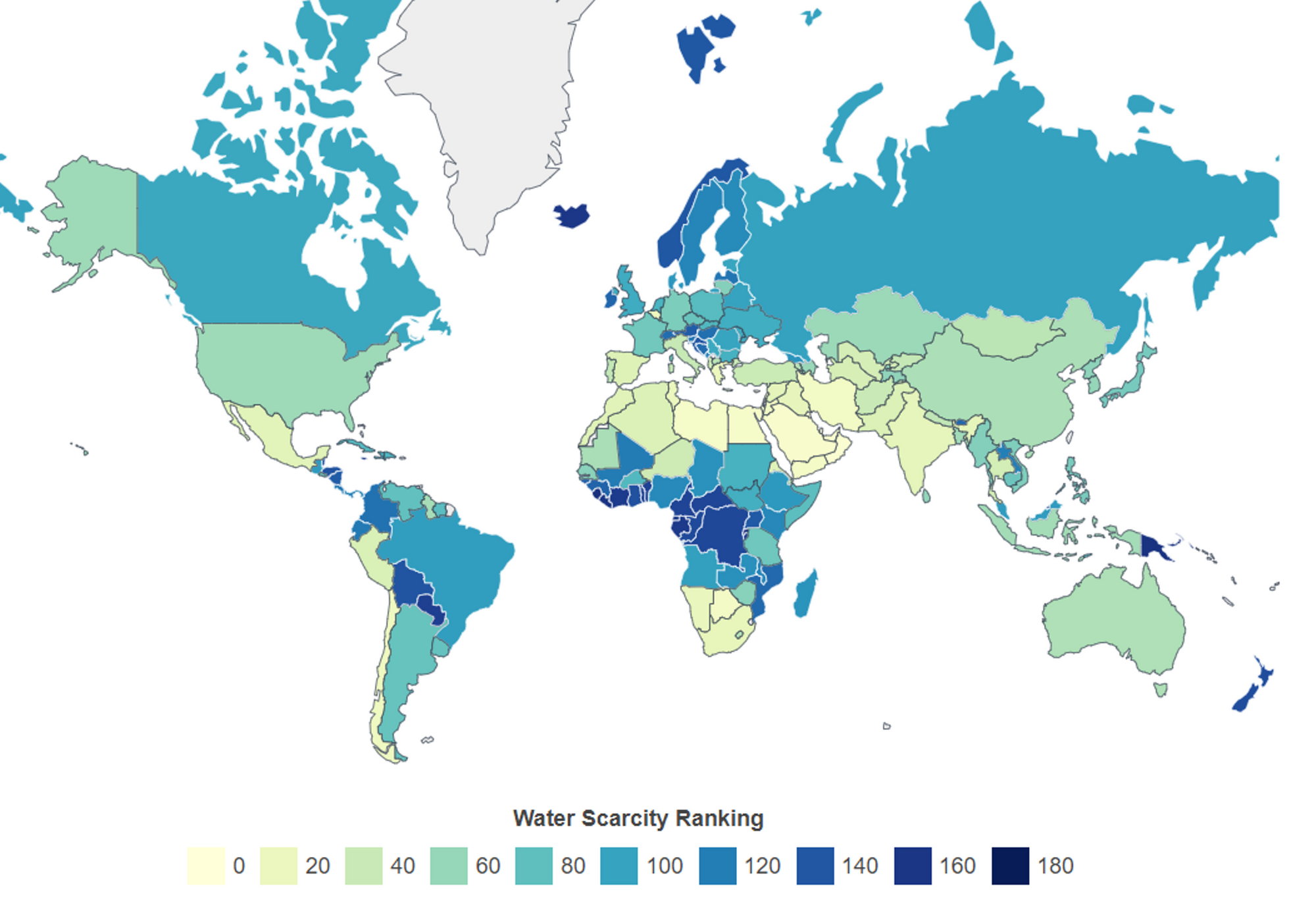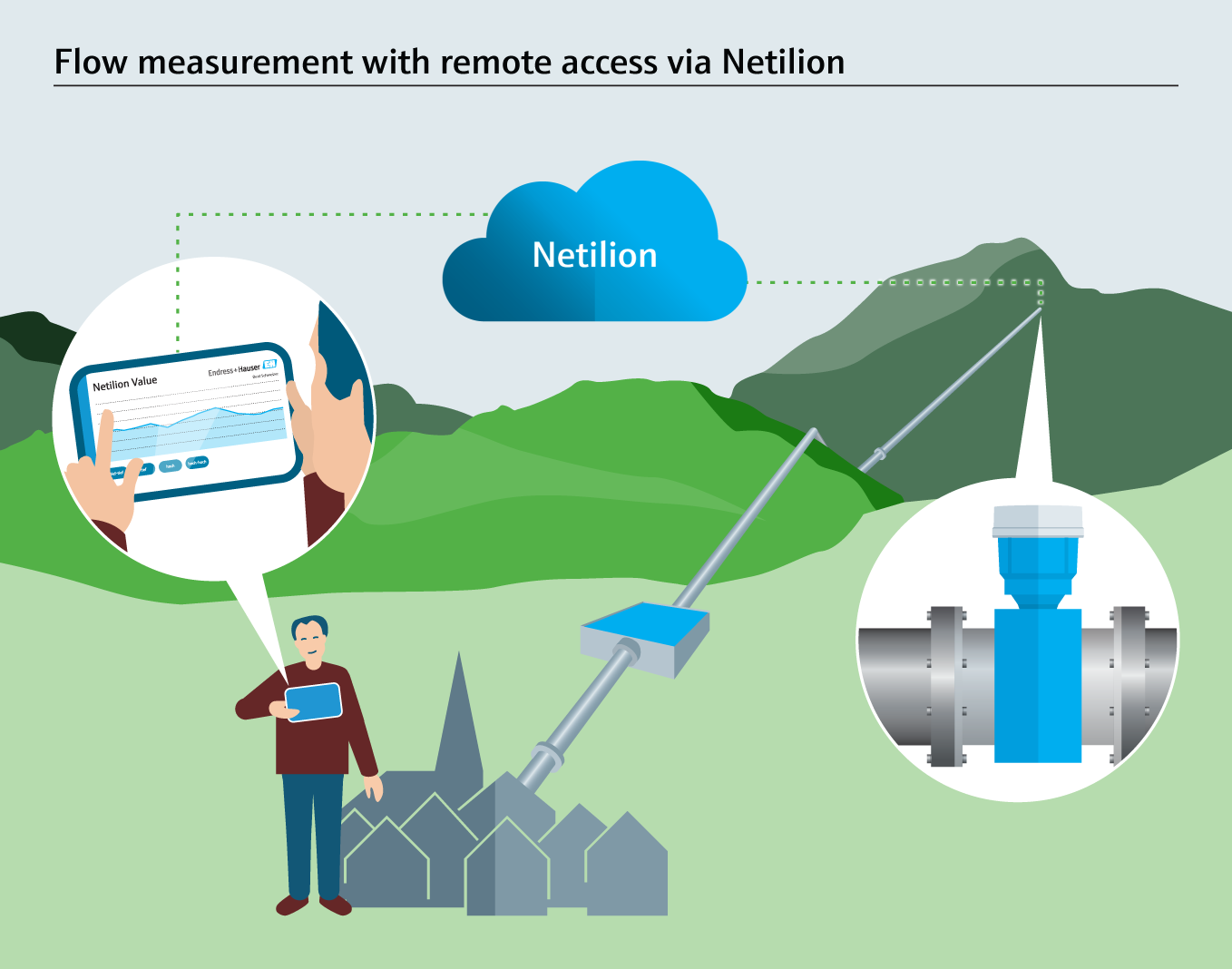Water scarcity? How IIoT can help
Water scarcity is becoming a global threat. Growing populations, uneven water distributions and the exacerbation of climate change are depleting water resources. Fortunately, IIoT opens new doors for monitoring water resources to tackle water scarcity.
Water scarcity seems like a surreal issue. We see water everywhere, from the rain to the ocean covering over 70% of the earth. Yet, why is water considered as scarce? Whilst the majority of the earth is covered by a large body of salt water, only 2.5% of the earth's water volume is freshwater, with half of that volume being unattainable and trapped in ice sheets and glaciers.
The United Nations describes water as a finite source growing in demand. Half of the world's population could be living in areas facing water scarcity by as early as 2025. With climate change exacerbating the scarcity threat, we require a solution to track and secure our water resources for future generations.
Fortunately, the growing advancements in technology and digitalization enable opportunities to manage our freshwater resources. With the help of sensors, intelligent meters and the Industrial Internet of Things (IIoT), accurate and real-time data on water patterns become available to create an integrated water system to conserve water.
Before exploring the solutions, we will first grasp the definition and concepts of water scarcity.
What is water scarcity?
Water scarcity is defined as a lack of access to freshwater resources to meet the standard water demand. It can be classified as either physical or economic. Physical water scarcity refers to the lack of freshwater resources to meet the water demand, while economic water scarcity occurs when people lack access to adequate water resources due to insufficient infrastructure, money, or technology.
Both types often occur simultaneously in a region. For example, when minimal rain in a populated arid (too dry) country cannot be efficiently retrieved, the price of water will increase and will keep being inaccessible to certain groups of people.
Of course, severe water scarcity is seen as the worst case scenario. Around 25 countries are currently stated as suffering from severe water scarcity. In addition, numerous countries are at risk of experiencing water scarcity in the near future.

Why is it a growing issue?
Water scarcity is not a new threat. It has been present for centuries before. However, water scarcity was often considered a local issue instead of a national, or even global one. Today, the threat of water scarcity has expanded from a local to a possible global threat by the United Nations. The main causes of water scarcity are:
- Population and water wastage
- Pollution
- Insufficient data and poor integrated water management
- Droughts
Population and water wastage: The global population is growing exponentially. All 8.1 billion people require access to freshwater, which puts a high demand on the freshwater supplies. Additionally, the population is unevenly distributed across the globe, causing high densely populated areas to put even more strain on regional water networks. This is why cities are currently quite often in a state of water scarcity, especially during summer when the demand for freshwater rises and the refilling of water supplies is at its minimum.
Unfortunately, the bigger issue is how this water is actually being used. In many countries with a well-equipped water network, people have grown accustomed to luxuries and use drinking water for flushing toilets, washing cars, watering lawns and filling up swimming pools. Toilets are the primary source of water use in the home, with old toilets using as much as 27 liters per flush. This water wastage causes water prices to go up in the summer, and even causes cities to implement a water ban to save freshwater for essential purposes.
Pollution: Water quality and water scarcity go hand-in-hand. When freshwater sources become polluted, the availability and quality of consumption is also negatively impacted. A 2017 report by UNESCO shows that over 80% of the world's wastewater is returned to the environment without any treatment. This not only threatens our health, but also leaves long-lasting impact on ecosystems. It is incredibly difficult and expensive to clean these polluted water bodies, especially as pollution can seep into the river/lake bed and groundwater reservoirs. If water is not treated well, outbreaks of water-born infectious diseases are likely to occur.
Insufficient data and integrated water management: Today, water monitoring encompasses numerous water parameters and also the human (anthropogenic) influences on the water and sediments, aquatic organisms and other biological factors. However, long-term and sufficient data are required to accurately model predictions. While several countries, such as the US, have started collecting streamflow data since 1900, the data consist of high uncertainties by including extreme events in the average, without any contextualization. For example, the Colorado river flow measurements were collected during extremely wet periods and resulted in an overestimation of available water in 1920. Now, the river is depleted and the surrounding areas are at risk of water scarcity.
Several countries with a high risk of water scarcity often have insufficient longitudinal data of various water volume parameters, resulting in inaccuracies in predictive modelling. The United Nations explains how a lack of data results in a lack of integrated management that can lead to water scarce countries being more susceptible to future events.
Droughts: Droughts are not a new phenomenon and are periods of drier-than-normal conditions. A lack of rain causes a water imbalance and consequently, water shortages, streamflow reduction and depletion of both groundwater and soil moisture. Droughts are difficult to monitor, as they are variable and make it difficult to distinguish random events from those possibly shaped by human-caused warming. However, the rising temperatures are intensifying and prolonging drought conditions, which will deplete water bodies due to excessive evaporation and of course, consumption. Ironically, the additional atmospheric moisture actually triggers rain in other regions, creating a cascading effect by losing all the evaporated moisture in one area.
How can we become more resilient?
For countries to become resilient, governments should have a general understanding of the ecological, physical and seasonal trends of regions in their country to invest in appropriate water management systems, instead of relying on depleted groundwater reservoirs. Therefore, in-depth quantitative data on water should be accumulated at various geographical locations, as well as considering different stakeholders. Without the supply of reliable information and the consideration of stakeholders, policy decisions can lead to mismanagement of water.
The Anti-Atlas mountains in Morocco have poor access to drinking water and suffer from many droughts. While rain is minimal, the area receives a lot of fog, due to its coastal location. Instead of relying on traditional solutions like wells for water, the local community worked with nature and installed fog catchers to harvest fog water and battle droughts.
Numerous engineering and technology companies, such as Endress+Hauser, aspire to be a sustainable actor as part of the company responsibility and provide sustainable solutions for various industries. With our measuring equipment and our well-known IIoT ecosystem Netilion, we at Endress+Hauser enable the automated and controlled measurement of water resources.
Of course, our solutions vary for different purposes. For example, one of our solutions provides measurement technology to help Hong Kong use seawater for flushing toilets. As turbidity is one of the decisive quality criteria, the turbidity sensor (Turbimax CUS52D) ensures accurate, stable and reproducible turbidity values, as well as measuring other water quality parameters (free chlorine, dissolved oxygen and pH value). Through this solution, Hong Kong could reduce drinking water consumption by 20%. As growing demand, especially in cities, is a major cause of growing water scarcity threat, these solutions can ensure the drinking supply for the population in the future.
How IIoT can help
The solutions listed above are great for tackling future predicted water scarcity. Nevertheless, accurate monitoring of water bodies can involve unique challenges, such as exposure to the elements, poor site accessibility, while integrating specific parameters and multiple technologies. IIoT opens new doors for monitoring water resources to tackle water scarcity.
Netilion, our IIoT ecosystem, connects the physical and digital worlds by sending valuable information from the monitored water bodies straight to your phone, tablet or other devices. In combination with Liquiline (transmitter for analytical measurements) and Edge Device, the various sensors to monitor water parameters can be transferred and integrated in a cloud-based monitoring system. Netilion Value allows continuous access to water parameter information, even from measuring points in remote locations. If a significant water reduction is measured, a notification alarm will go off.
Our IIoT ecosystem can also be used in detecting leakages in water pipes. Various communities supply water across the country from remote water reservoirs through pipes. However, due to possible large distances and remote locations, it can take a long time for any possible detection of a burst pipe for example. Our flowmeter (Promag W 800) with the WirelessHART protocol (SWA70) are specifically made for remote and difficult to access measuring points. In combination with the wireless gateway (SWG70) and an installed Edge Device, the collected flow values can be transferred to the cloud-based monitoring system Netilion. This allows quick leak detection monitoring and sends an alarm signal with geo-location to the instrument measuring a deviation for easy navigation to reduce further water spillage.

Other digital services, such as Netilion Health and Netilion Library, can improve the efficiency and durability of water monitoring. Netilion Health increases the transparency and reliability of the devices installed, via instrument heartbeat verification. This optimizes maintenance and calibration cycles without process disruptions to ensure the continuous collection of quantitative data. Netilion Library is a file management service to organize documents and makes relevant information accessible, which is especially important for designing and maintaining an appropriate water management system.
Netilion has a lot more to offer than the services mentioned above, and can be used for various purposes. Why not set up an account for free now?
Every drop of water saved can make a difference!


